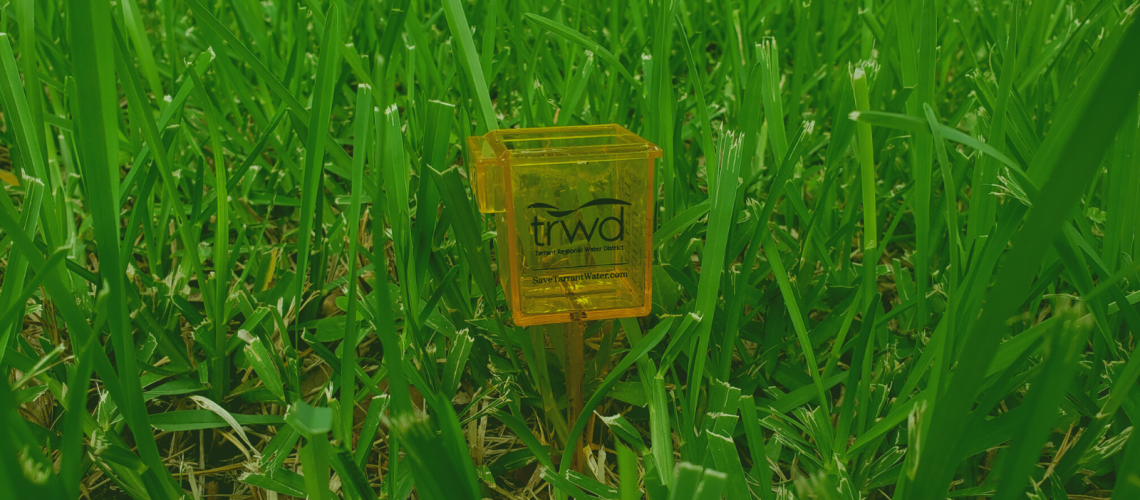This article walks you through the use of TRWD’s Sprinkler Test Kit! The kit helps measure the output of your sprinkler system. If you don’t have a sprinkler kit, don’t worry, you can still use this tutorial with your own supplies.
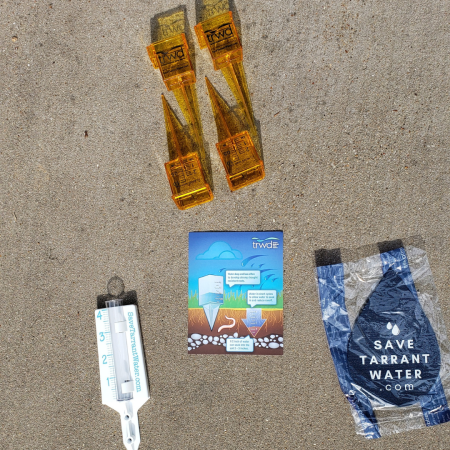
We give these Sprinkler Test Kits out as a part of our DIY Sprinkler Workshops. If you would like to attend a workshop, check out our events calendar to see if one is coming soon.
Here is what should be in your kit:
- four staked cups with measurement markings
- a reference card
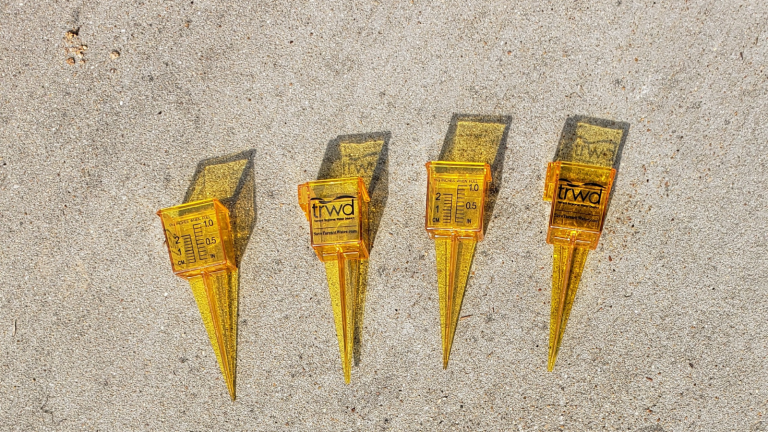
If you don’t have a sprinkler kit: Use any straight-sided vessel, where the bottom and opening are the same size and shape, like a tuna or cat food can. For this application, these are referred to as “catch cans” because they catch the water. You will need at least four catch cans. If you are using cans, you will also need a ruler.
Once you have your supplies, it is time to see how much water each sprinkler zone is putting out. The staked cups in the kit or your catch cans will be placed on the ground to capture water from your sprinklers.
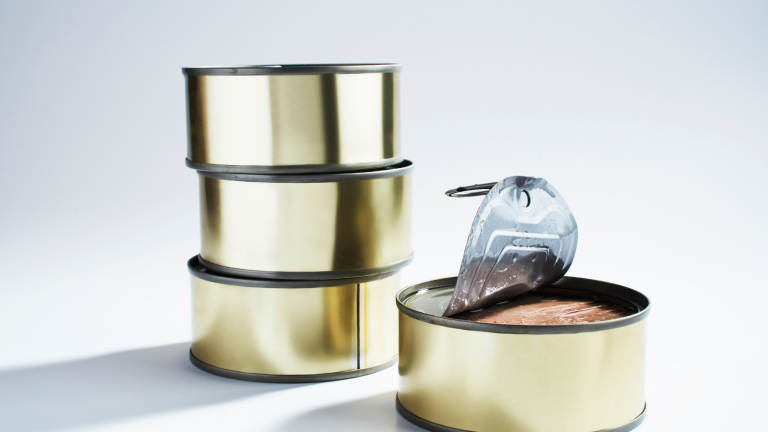
Your sprinkler system zones will have different water output rates, so you need to test each one separately. Testing them all will allow you to see your total water output for a certain amount of time.
Within each zone, there can be uneven distribution of water, so it is important to use multiple cans for each zone. The more vessels you place out, the better results you will be.
To measure a sprinkler system’s output:
Step 1: List out all of your sprinkler zones on a piece of paper so you can keep track of everything. It may help to draw a map of your yard and all your zones.
Step 2: Starting with your first zone, go to the area it covers and place your cans on the ground. Put one next to the spray heads, some between heads, and in various areas around the zone. If you are doing a landscape bed rather than the lawn, try not to put a can right beneath a plant. If you have any areas that look wetter or drier than the rest of the zone, make sure to place a can there to see what the issue may be. It can help to put each can location on a map of your yard for reference, but it is not necessary.
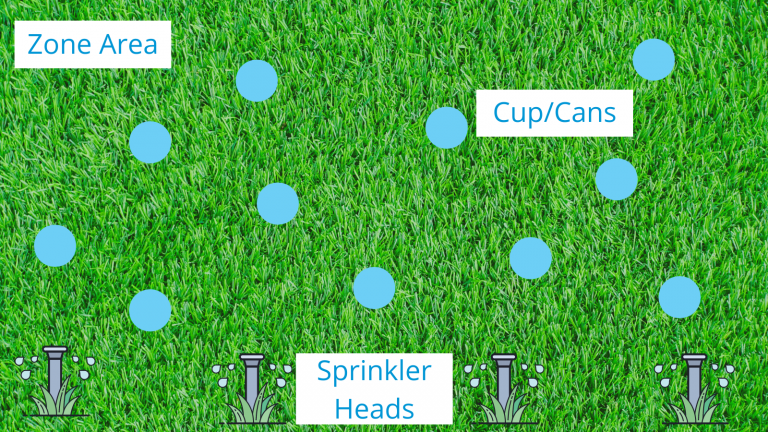
Step 3: Run that zone for 10 or 15 minutes and write down the amount of time it ran for.
Step 4: Go to each can and measure the capture water in inches. If you have the kit, you can use the markings on the side of the cups. If you are using catch cans, measure with a ruler. Write down the number of inches in each cup.
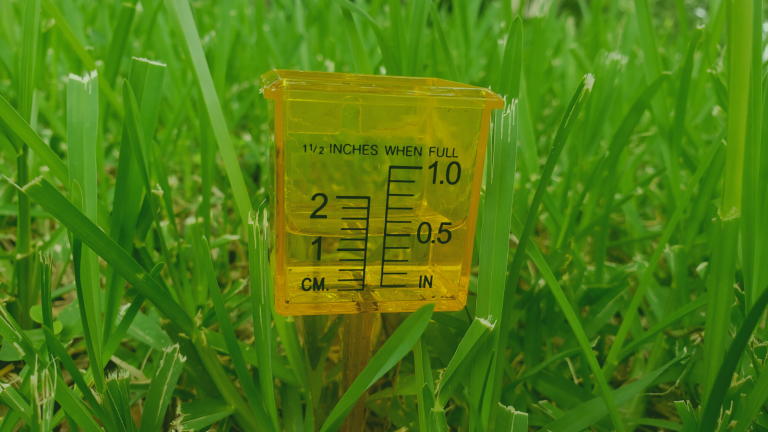
Step 5: Do the same for each zone.
Step 6: Look at your data and do some calculations.

First look at each zone individually and see how different each of the measurements are within the zone. If the amount in the cans is vastly different, there may be an issue with the maintenance or design of that zone, resulting in uneven coverage. Look at the zone while it runs and try to see what the problem may be.
Average the cup/can values within each zone. There should be at least four for each zone. This is the average number of inches put out during that time period for each zone.
To get inches per minute, divide it by the total minutes it ran. For example, if you ran each zone for 10 minutes, you would divide by 10 to get average inches per minute for that zone.
Inches Per Minute = Average inches of water / Number of minutes ran
This is what you will use to calculate how many minutes to water when given watering advice in inches.
Minutes to water = Inches recommended / Inches per minute
For instance, your lawn needs 0.5 inches this week and your rate for zone 1 is 0.025 inches per minute, using the minutes to water formula, you would set zone 1 for about 20 minutes total for the week.
So, how many gallons of water is that?
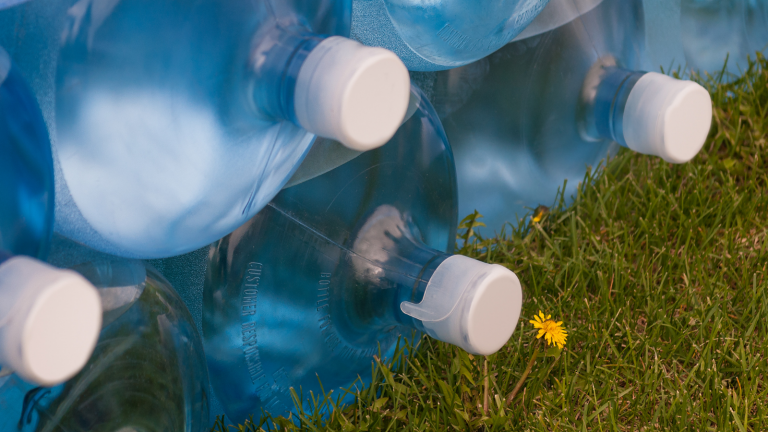
For this, you will need to know the square footage of each zone. You may already know this from your original system plan or property map. If not, you can either measure or just guess a ballpark figure for each. If you are estimating, estimate the length of each side and then multiply them together.
After you have the square footage of each zone written down, multiply by 144 square inches per square foot to get the square inches of each zone.
Zone square inches = Zone square footage * 144 sq inches per sq foot
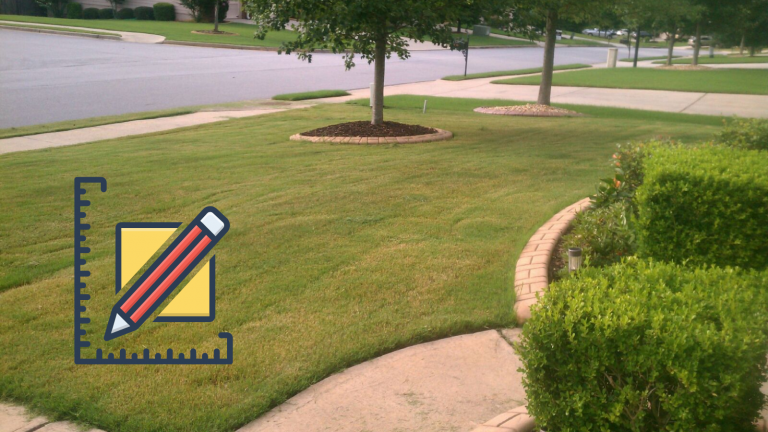
Multiply the square inches of each zone by the average inches per minute previously calculated for that zone. This is the cubic inches of water produced per minute for each zone.
Zone Output in cubic inches of water per minute = Zone square inches * Average inches per minute
To get gallons per minute, multiply by 0.004329.
Zone Output in gallons per minute = Cubic inches of water per minute * 0.004329 Gallons per cubic inch of water
This will still be your system’s output per zone. Multiply the number of minutes you regularly run each zone by the average gallons per minute for that zone, and then add all the zones together to see how many gallons you use on a typical watering event.
Zone Output per cycle in gallons = Zone Output in gallons per minute * Minutes per cycle
Total system output per cycle = Add all zone outputs

Now you look at your utility bill for the price you pay per gallon of water. It will likely be listed in “CCF” or 100 cubic feet of water. To get the price you pay in gallons, divide the cost per CCF by 748.
Price per gallon = Price per CCF / 748
Your utility bill will likely have tiered rates, meaning the more water you use in a month, the more you pay. Be sure you are taking that into account when managing the water you use.
To get the total amount of money you spend on irrigation in a typical month, you will multiply the total gallons you use per month by the price per gallon.
Monthly Cost per Zone = Zone Output in gallons per minute * Total Minutes Zone is Ran per month * Price per Gallon
Total Monthly Cost = Add Monthly Costs for all Zones
Note: This exercise is for general knowledge only and numbers may fluctuate depending on the billing and water meter reading practices of your utility.

How much do you spend per month watering your lawn on average?
Was it higher or lower than you expected?
During the summer, outdoor water use accounts for more than 50% of the average home’s water usage. Is your outdoor water use more or less than 50% of your total water use on average?
If you aren’t sure how much to water each week, sign up for free Weekly Watering Advice that is custom to your location.
If you think you may have uneven coverage, misaligned heads, or other issues with your sprinkler system, sign up for a free sprinkler evaluation performed by a licensed irrigator.
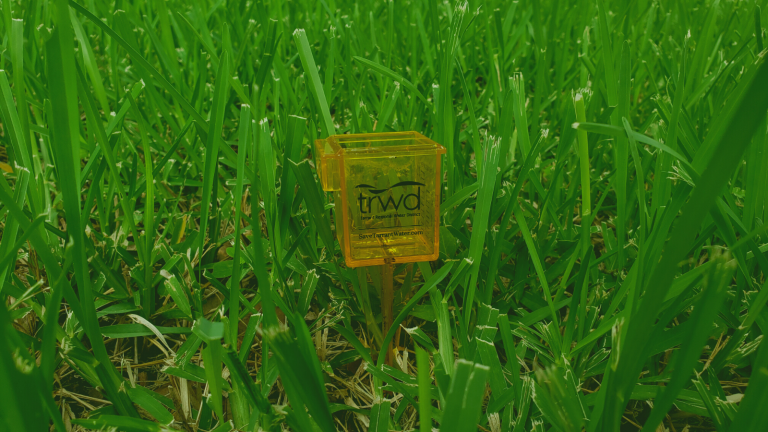
Example
Data collected after running each zone for 10 minutes:
Zone 1 – rotors
Cup 1 – 0.14 inches
Cup 2 – 0.12 inches
Cup 3 – 0.19 inches
Cup 4 – 0.2 inches
Zone 1 average for 10 minutes = (0.14+0.12+0.19+0.2)/4 = 0.1625 inches
Zone 1 average inches per minute = 0.1625/10 = 0.01625
Zone 2 – rotors
Cup 1 – 0.16 inches
Cup 2 – 0.15 inches
Cup 3 – 0.13 inches
Cup 4 – 0.21 inches
Zone 2 average for 10 minutes = (0.16+0.15+0.13+0.21)/4 = 0.1625 inches
Zone 2 average inches per minute = 0.1625/10 = 0.01625
Zone 3 – spray
Cup 1 – 0.21 inches
Cup 2 – 0.32 inches
Cup 3 – 0.26 inches
Cup 4 – 0.23 inches
Zone 3 average for 10 minutes = (0.21+0.32+0.26+0.23)/4 = 0.255 inches
Zone 3 average inches per minute = 0.255/10 = 0.0255
Zone 4 – spray
Cup 1 – 0.24 inches
Cup 2 – 0.27 inches
Cup 3 – 0.3 inches
Cup 4 – 0.26 inches
Zone 4 average for 10 minutes = (0.24+0.27+0.3+0.26)/4 = 0.2575 inches
Zone 4 average inches per minute = 0.2675/10 = 0.02675
Zone 5 – rotors
Cup 1 – 0.16 inches
Cup 2 – 0.13 inches
Cup 3 – 0.17 inches
Cup 4 – 0.21 inches
Zone 5 average for 10 minutes = (0.16+0.13+0.17+0.21)/4 = 0.1675 inches
Zone 5 average inches per minute = 0.1675/10 = 0.01675
If I need to water 0.5 inches this week:
Zone 1 minutes = 0.5/0.01625 = 30.8 minutes
Zone 2 minutes = 0.5/0.01625 = 30.8 minutes
Zone 3 minutes = 0.5/0.0255 = 19.6 minutes
Zone 4 minutes = 0.5/0.02675 = 18.7 minutes
Zone 5 minutes = 0.5/0.01675 = 30 minutes
To cycle and soak, I would probably divide each time by 4 and run 2 cycles about an hour apart on each of my 2 watering days.
How much water is that?
Zone 1 area = 2000 sq ft = 288000 sq in
Zone 2 area = 2000 sq ft = 288000 sq in
Zone 3 area = 1000 sq ft = 144000 sq in
Zone 4 area = 2500 sq ft = 360000 sq in
Zone 5 area = 1800 sq ft = 259,200 sq in
Zone Output (for 0.5 inches of water)
Zone 1
0.5 in * 288000 sq in * 0.004329 = 623 gallons
Zone 2
0.5 in * 288000 sq in * 0.004329 = 623 gallons
Zone 3
0.5 in * 144000 sq in * 0.004329 = 312 gallons
Zone 4
0.5 in * 360000 sq in * 0.004329 = 779 gallons
Zone 5
0.5 in * 259,200 sq in * 0.004329 = 561 gallons
Total for 0.5 inches of water = 2,898 gallons!!!!

